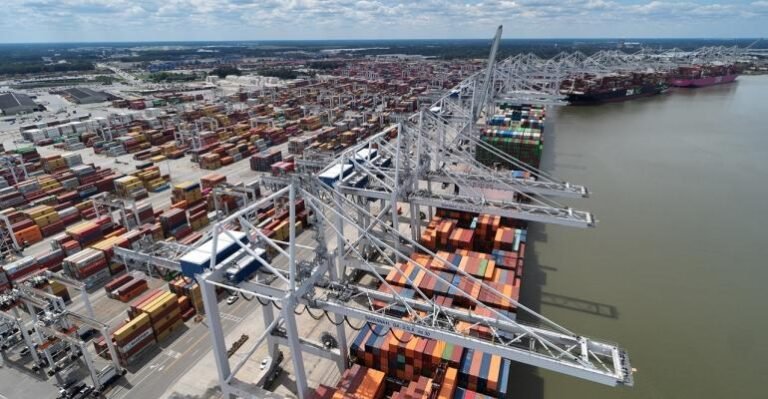On 15 August the WCI was down 2% at $5,428 per teu compared to a week earlier. The index 48% below the previous pandemic peak of $10,377 in September 2021, but it is 282% more than the average 2019 (pre-pandemic) rate of $1,420.
“Spot will decline as the market has adjusted to the new capacity, but we will need to see what happens to demand,” said Heaney who added, “We are hearing from shippers that carriers are touting for cargo now.”
After several weeks of decline the Shanghai Containerized Freight Index (SCFI) moved up marginally on Friday increasing to 3281.36 points up 27.46 points over the previous week.
An US East Coast strike could be the next spanner in supply chains with the deadline for contract negotiations 30 September and strike action already planned for 1 October.
US market consultant Jon Monroe said today: “As we approach the contract expiration, there are still no clear conclusions in the ongoing negotiations.”
Analysts Sea-Intelligence estimated that US East Coast ports would handle 2.3 million teu in October, which would equate to an impact of 74,000 teu per day if dockworkers were to strike.
Heaney also believes that USEC industrial action would “have an impact for sure, particularly on transpacific cargo, with increased flows into West Coast ports to counter the loss of East Coast capacity.”
Whether the East Coast disruption is realised remains to be seen, but with no further disruptions Heaney expects spot rates on the major trades out of Asia to Europe and the US to fall, with more capacity expected to be delivered during the rest of this year.
“Spot rates are trickling down slowly, but they are still very elevated compared to the start of the year,” said Heaney, “Overall rates, contract and spot, are high and as the market adjusts to new capacity, we will need to see what demand looks like.”
Source: Seatrade Maritime News



